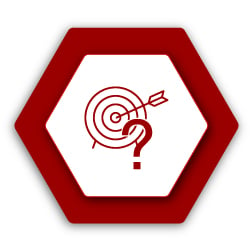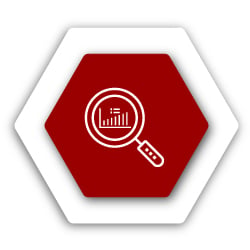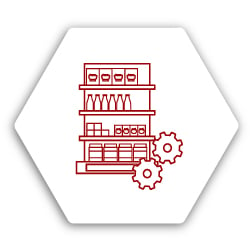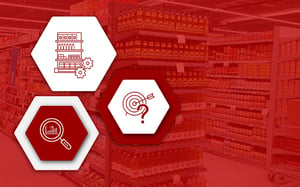There are many good reasons why you need to pay close attention to any end cap display in your store. For one, they allow you to create visually appealing spaces to draw in shoppers. If you’ve set them up right, they also allow you to be more efficient with your retail space. But, how do you create these displays?
Also, what is their purpose? Who looks after them? Moreover, what are the common elements of successful and effective end cap displays?

What is the purpose of an end cap display [and who is responsible for them]?
Before we look at how you can go about setting up a profitable end cap, it’s worth unpacking its purpose. Why? It’s only once you fully understand the meaning of something that you can then use it effectively.
Also, while we have written articles about end caps and why you need to be strategic when setting them up, we haven’t yet touched on its purposes.
Here it is: end caps are unique display fixtures with two purposes that feed into each other.
Firstly, they display items, drawing customers into your store or to a specific aisle. The items displayed could be on promotion, or you might want to highlight a particular product. The choice is up to you. Secondly, an end cap display aims to sell more products.
Another way of explaining it is to say it’s like bundling your marketing and sales efforts into one. Visually, an end cap display captures attention, and functionally it can help you to convert browsers into buyers.
As for who is responsible for stocking and maintaining your end cap displays, it depends.
If you’re a retailer and a supplier purchased the end cap from you, it’s their responsibility. They’d need to maintain the stock levels and ensure it looks good at all times. The merchandiser attached to that specific company might also get involved here to act on behalf of the supplier in-store.
On the other hand, if your head office chose the items you display, it is your responsibility as a store to manage it.
Of course, that doesn’t mean these are your only options. You could also co-manage it with your supplier.
For example, you could sell the space to one of your suppliers. However, the supplier might not have the workforce to do everything. In that case, you make a deal. As part of the agreement, the supplier must provide the stock. In return, you could implement the layout of the end cap display and maintain it.

Key questions to ask yourself when setting up an end cap display
Before you begin building any end cap display for your store, it’s essential that you place yourself in your customers’ shoes. After all, if you want to captivate them and entice them to buy, you must think like them.
So, the next time you visit a store, be that your own if you run one, or one of your competitors, observe the end cap displays. Which ones grab your attention? Ask yourself why it makes you take notice.
If you look at a variety of effective end caps across multiple stores, you’ll find they all have common elements. They take advantage of colour, clear messaging, vertical structure, and lighting, amongst others. We’ll touch on a few more key elements below.
They also consider answering a variety of questions. As with anything, they are the 5 W’s - who, what, when, where, and why.
Who?
For this question, the ‘who’ could refer to multiple people, depending on who is responsible for the display. We have already touched on it briefly above.
For example, it could refer to the person in your store who sets up the display. It could also refer to the brand displayed and the supplier who was involved.
What?
The next question focuses on the items that you place on the display. What items are you going to display? It is rare to stock an entire range of items unless the range itself is small.
For example, there might be a promotion on Brand A, which is a mouthwash product. The entire range consists of 10 SKUs, but the promotion is only on four of those items. In that case, it wouldn’t make sense to stock everything. Instead, you’d only stock those on promotion on your end cap to increase awareness.
Increasing the awareness of these items can lead to increased attention on the rest of the range, which can lead to category growth.
When?
If ‘what’ refers to the items displayed, it’s just as critical to ensuring you stock them at the right time. That’s where this question plays a role. It refers to seasonality.
After all, it is counterproductive to promote air conditioners or fans during the middle of winter. Promoting hot chocolate during summer is just as bad. You’d be better off matching your promotions to the season. So, in this instance, an end cap display with a hot chocolate special would work well during autumn or winter.
Where?
Next up is ‘where’. This question refers to the location of your display. Where do you place your end caps? Shelf space is one of your most valuable assets as a retailer. However, it becomes worthless if you don’t use it effectively.
Of course, we’re not referring to the most plausible location - at the end of an aisle. Instead, we’re referring to which aisle.
With end caps, if you fail to match them to your category adjacencies, you only confuse your customers.
Why?
The last question is a straight-forward question which we have already alluded to earlier in this piece.
Why should you set up an end cap display? Simple: to please customers and increase your sales.
Regardless of who set up the end cap display, it is a profit-generating vehicle. Without it in your store, you lose out on opportunities to increase your sales.

Key elements of successful end cap displays
1. They keep a theme in mind
The first key element of any successful end cap display is that they all keep one theme in mind. In reality, that goes for anything merchandising-related. And, it comes back to looking at your displays and gondolas as a customer.
What will catch their attention? A themed display that is visually appealing will entice them to browse for longer and even add more items to their basket. Meanwhile, a disorganised display with no common theme will give off the impression that it is a dumping ground for merchandise that you don’t know where else to place.
For example, a pharmacy could merchandise a gondola end with cold and flu items. An auto parts store could set up a do-it-yourself display with all the necessary items to do an oil change. Regardless of the theme you choose, make it obvious to the customer as that can lead to an increase in your sales.
2. They showcase your branding
Gondola end caps are the perfect place to showcase your brand. You might find a customer wanders through your store to find out more about a product or brand.
Of course, allowing your customers to wander your store is not necessarily a bad thing - it could lead to exposure for other products. However, you wouldn’t want them to do it aimlessly or become frustrated.
Merchandising your end cap display with items that highlight your brand is key to driving interest.
Let’s consider the example of a local craft store that might feature merchandise that matches the current school schedule or how a grocery store could feature a s’mores end cap with all store brand items.
With an end cap display, you have the opportunity to offer customers a taste of your overall selection.
3. They highlight new products with cross merchandising
If you have an exciting new product that you want to display, one option to you is to place it on display before the shelf that stocks that category.
Another option is to cross-merchandise throughout your store. While the first option is a given, the second is a must if you want to capitalise. What’s more, shoppers who don’t come in looking for that particular product could place it in their basket because you cross-merchandised it.
For example, if you stock coffees and teas from around the world, you could merchandise the latest arrival of locally roasted coffee beans in a gondola run that stocks your brewing devices or mugs. It’s the same if you have a new brewing device.
By placing it on display at the end of your coffee and tea aisle, you’re guaranteed to have customers walk past it and consider buying it.
4. They entice shoppers down aisles
Merchandising your end caps to feature items from corresponding aisles is a smart and subtle way to remind shoppers of a product they might need. That’s why cross-merchandising is so effective.
That said, as stated above, the key to success is all about visual appeal. If you can use the right colour, package the product in a way that naturally draws the eye, and complete that with a well-designed display, you can draw customers into an aisle that they might otherwise have not considered shopping.
There is also the point that your end caps function as signposts, subconsciously telling customers what they can expect within an aisle. The average shopper doesn’t spend a lot of time wandering around. Thus, every minute they spend in-store is an opportunity for you to make a lasting impression and gain a sale.
Conclusion
DotActiv’s planogram software is used by over 1500 retail professionals in more than 60 countries across the globe. Interested in finding out more about how we can enable you to use your business data to create better product layouts, localised assortments, advanced retail analytics and more?
You can visit our online store and try any of our software editions free, for 14 days.



